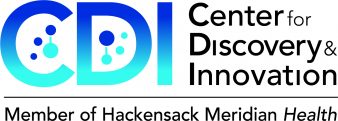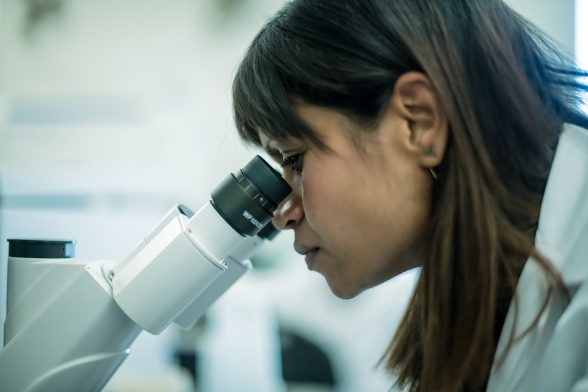Hackensack Meridian Center for Discovery and Innovation

Nutley, New Jersey USA
Member since 2019

Representative
Jansy Sarathy, Ph.D. Asst. Member, Center for Discovery and Innovation, Asst. Professor, Hackensack Meridian School of Medicine
Team
- Jansy Sarathy
- Matthew Zimmerman
About
The CDI is committed to the real-time application of translational science to impact patients with infectious diseases. Currently, ten principal investigators and more than 85 scientists and support staff are pursing studies of bacterial, fungal and viral pathogens with an emphasis on detecting, combatting and preventing opportunistic infections among patients with underlying predisposing conditions due to cancer, HIV, diabetes, cystic fibrosis, and other acute or chronic conditions. Programs include studies of novel drug discovery, lead compound optimization and preclinical development; drug optimization for therapy; vaccine development; drug resistance mechanisms; prophylaxis and prevention; molecular diagnostic and biomarker development; molecular epidemiology; viral evolution, T cell responses and clinical trials. Prominent pathogens include multidrug resistant: Mycobacterium tuberculosis, non-tuberculous Mycobacteria (NTM), Klebsiella pneumoniae, Escherichia coli, Acinetobacter baumannii, Neisseria gonorrhea; Candida spp., Aspergillus fumigatus; SARS-CoV-2, influenza, and other highly pathogenic viruses.
These programs are supported by 26 NIH awards, as well as the Gates Foundation, contributing in excess of $20 million a year in funds. To support the numerous studies of high-threat pathogens, the CDI operates ~2,000 NSF of biosafety level 3 (BSL-3) laboratory space and another ~3,000 NFS of dedicated animal BSL-3 support space. The BSL-3 animal model team is highly experienced logging >3 million animal days of BSL-3 pathogens in the past decade. Specialty resources include a dedicated mass spectrometry suite with four LC/MS mass spectrometers, two Thermo Maldi Orbitraps, and a Bruker Solarix SR MALDI mass spectrometry imager.
• The CDI hosts a $33 million NIH Center of Excellence in Translational Research (CETR) which is focused on developing therapeutic countermeasures to overcome high-threat bacterial and viral pathogens.
• During COVID-19, the CDI established the first FDA EUA-approved RT-PCR test for SARS-CoV-2 for a healthcare system (March 2020); they helped establish a highly successful high-titer convalescent plasma therapy program that was optimized for neutralizing antibodies (April 2020) and profiled by 60 Minutes; they sequenced >4,000 viruses and created a high throughput system for analysis of virus variants of concern; and they are actively engaged in developing next generation anti-SARS-CoV-2 drug candidates with Pharma and Biotech partners.
• Global partnerships including those in the United Kingdom, France, Germany, South Africa, Israel, Singapore, China, Brazil, and Columbia prominently address studies of multidrug resistant organisms including M.tb, Candida auris, Aspergillus fumigatus and Klebsiella pneumonia.
• CDI maintains strategic collaborations for infectious diseases with numerous companies, organizations and public health groups including CDC, WHO, TB Alliance, B&M Gates Foundation, Wellcome Trust, UK Medical Research Foundation, New York Genome Center, Merck, Pfizer, Regeneron, Gilead, Cellularity, Quest, BioMerieux, T2 Diagnostics, and numerous other biotech companies.
Role & Expertise
Our lab has developed methods, preclinical tools and platforms to image and quantify the differential penetration of drugs into TB lung lesions. Specifically, we measure antibiotic concentrations in blood, lung tissue and key areas of TB lesions where the pathogen resides using three complementary methodologies: (1) classical analytical chemistry with high-pressure liquid chromatography coupled to tandem mass spectrometry (HPLC-MS/MS), which delivers absolute drug concentrations that serve as input to build a pharmacokinetic model of drug metabolism and distribution from blood to the sites of disease, (2) laser-capture microdissection in thin lesion sections followed by HPLC-MS/MS analysis which delivers drug quantitation in distinct areas of lung lesions such as the cellular rim and caseous center of necrotic lesions, the hallmark of TB pathology, (3) mass spectrometry imaging of thin lung sections to visualize the relative abundance of each drug, including drug combinations, in lesions and surrounding lung tissue at a spatial resolution of 30 m.
To determine whether adequate concentrations are reached in the various lesion compartments, we have developed potency assays that measure how drug tolerant M. tuberculosis is at the most recalcitrant site of disease, the caseum. In collaboration with the group of Rada Savic, we use these values to simulate ‘lesion coverage’ of drug combinations throughout a typical dosing interval. This translational modeling platform enables prioritization of drug regimens that have the potential to reduce treatment duration and relapse rates.
Our research interests include the fate of anti-mycobacterial drugs and other antibiotics from plasma to tissues, infected organs and single cells. Our laboratory uses imaging mass spectrometry and laser-capture microdissection to visualize the spatial distribution of drugs at the site of infection, and how this affects drug efficacy in animal models and in patients.
